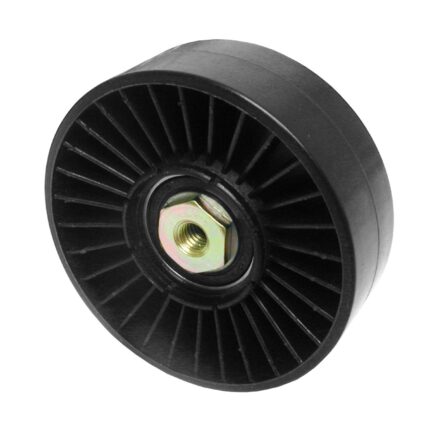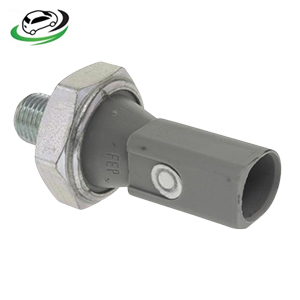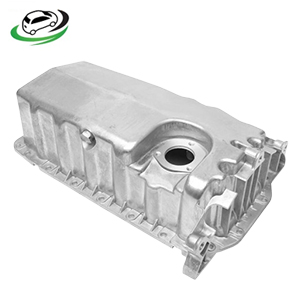Get Oil Pan Assembly Volkswagen Golf IV-2.0/TDI / Jetta IV-2.0/TDI / New Beetle-2.0/TDI 038103603N
The oil pan assembly is a critical component in an internal combustion engine, serving as both a reservoir and a channel for engine oil, which is essential for lubrication, cooling, and cleaning of the engine’s moving parts. Understanding its design, function, and maintenance is crucial for ensuring the longevity and efficiency of an engine.
1. Structure and Design
The oil pan, typically made from stamped steel, aluminum, or composite materials, is mounted to the bottom of the engine block. Its primary function is to store the engine oil when the vehicle is not running and to collect oil that drains back from various engine parts during operation.
The design of an oil pan varies depending on the engine type, vehicle model, and intended usage. In most cases, the oil pan is relatively shallow and wide to maximize oil capacity while minimizing the overall height of the engine. The pan is usually divided into sections, with a deeper sump at the rear where the oil collects, and a shallower section at the front. This design helps to ensure that the oil pump can easily draw oil even during hard acceleration, braking, or cornering, which might cause the oil to slosh around.
The oil pan is typically bolted to the engine block with a gasket in between to prevent leaks. Some oil pans have a drain plug at the bottom, which allows for easy oil changes. Additionally, many modern oil pans incorporate baffles and windage trays that help control oil movement and reduce windage losses caused by the crankshaft rotating in the oil mist.
2. Functionality
The oil pan’s primary function is to serve as an oil reservoir. The engine oil pump draws oil from the sump in the oil pan through a pickup tube, then circulates it through the engine’s various channels and components. The oil lubricates moving parts such as the crankshaft, camshaft, and piston rings, reducing friction and wear.
In addition to lubrication, engine oil also plays a crucial role in cooling the engine. As oil circulates, it absorbs heat from the engine’s internal components and returns to the oil pan, where the heat is dissipated through the pan’s surface. Some oil pans are equipped with fins or are made from materials with high thermal conductivity to enhance cooling efficiency.
The oil pan also helps in filtering contaminants. As oil drains back into the pan, heavier particles like metal shavings and carbon deposits settle at the bottom. The oil filter will eventually remove these particles, but the pan acts as the first line of defense.
3. Common Issues
Despite its simple appearance, the oil pan can be susceptible to a variety of issues that can impact engine performance and longevity.
- Oil Leaks: The most common problem with oil pans is leakage, which can be caused by a damaged gasket, loose bolts, or a crack in the pan itself. Oil leaks can lead to low oil levels, which in turn can cause insufficient lubrication and eventual engine damage.
- Physical Damage: Oil pans are located at the bottom of the engine and are therefore vulnerable to damage from road debris, speed bumps, or rough terrain. A dented or cracked oil pan can result in oil leakage and contamination of the oil.
- Stripped Drain Plug: Frequent oil changes, especially when not done carefully, can strip the threads on the drain plug or the pan itself, leading to leaks.
- Sludge Buildup: Over time, especially if oil changes are neglected, sludge can build up in the oil pan. This sludge can clog the oil pickup tube, leading to oil starvation and engine damage.
4. Maintenance and Replacement
Maintaining the oil pan is relatively straightforward but essential for engine health. Regular oil changes help prevent sludge buildup and ensure that the oil remains clean and effective at lubricating the engine. During oil changes, it’s also a good idea to inspect the oil pan and the drain plug for signs of wear, damage, or leaks.
If an oil pan develops a leak or is damaged, it may need to be replaced. Replacing an oil pan typically involves draining the engine oil, removing the old pan, cleaning the mounting surface on the engine block, and installing a new pan with a fresh gasket. It’s important to ensure that the new oil pan is properly torqued to avoid leaks and that the drain plug is not overtightened.
Some vehicles also use a low oil level sensor mounted in the oil pan. If this sensor fails, it can give inaccurate readings, potentially leading to engine damage if the oil level is actually low. Therefore, it’s important to address any issues with the oil level sensor promptly.
5. Advances in Oil Pan Technology
Modern oil pan designs have evolved to incorporate advanced materials and features that improve performance and durability. Aluminum oil pans are becoming increasingly common due to their lightweight and excellent thermal conductivity. Some high-performance vehicles use oil pans with integrated oil coolers or dry sump systems, which are designed to keep the oil supply consistent even under extreme driving conditions.
Follow us on Facebook for more parts.



